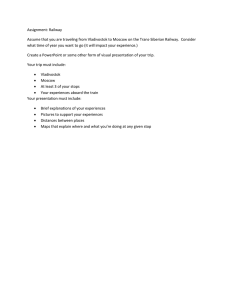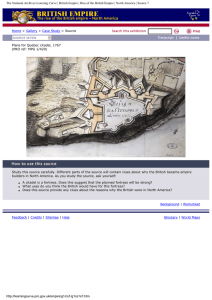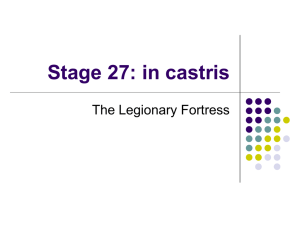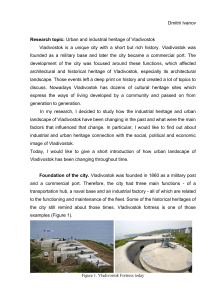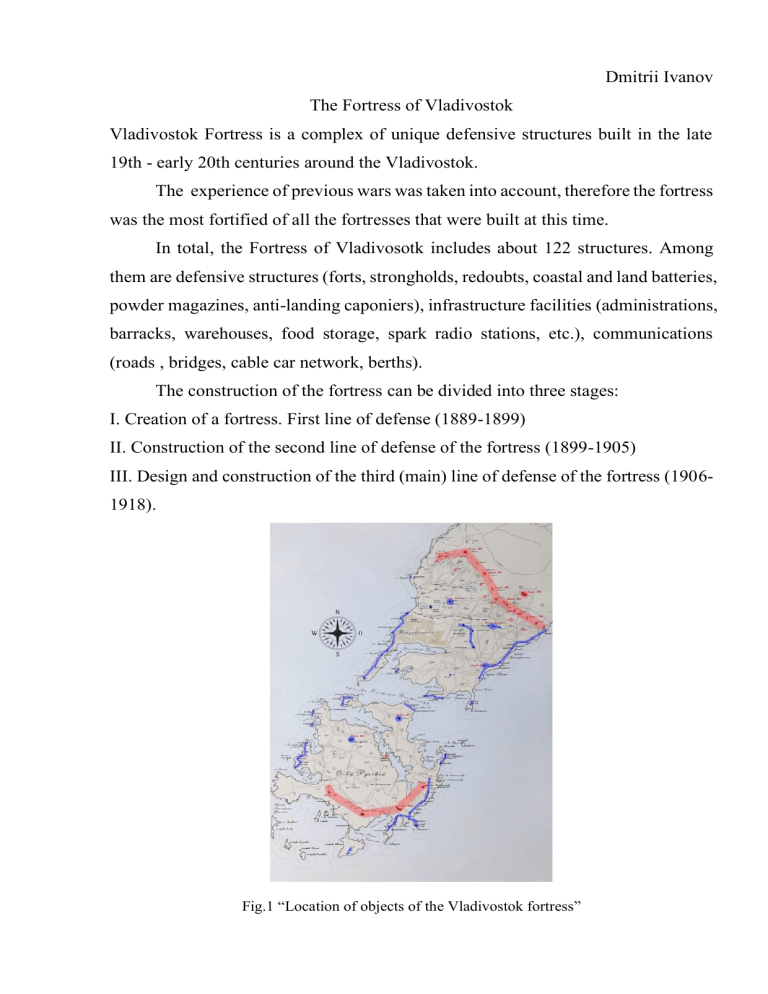
Dmitrii Ivanov The Fortress of Vladivostok Vladivostok Fortress is a complex of unique defensive structures built in the late 19th - early 20th centuries around the Vladivostok. The experience of previous wars was taken into account, therefore the fortress was the most fortified of all the fortresses that were built at this time. In total, the Fortress of Vladivosotk includes about 122 structures. Among them are defensive structures (forts, strongholds, redoubts, coastal and land batteries, powder magazines, anti-landing caponiers), infrastructure facilities (administrations, barracks, warehouses, food storage, spark radio stations, etc.), communications (roads , bridges, cable car network, berths). The construction of the fortress can be divided into three stages: I. Creation of a fortress. First line of defense (1889-1899) II. Construction of the second line of defense of the fortress (1899-1905) III. Design and construction of the third (main) line of defense of the fortress (19061918). Fig.1 “Location of objects of the Vladivostok fortress” The fortress structures of 1899-1905 are much smaller and less powerful than the structures that were built later. During this period, 5 forts were built, 3 of them in Vladivostok and 2 on the Russky Island. These forts are located closer to the city, so some were severely damaged, for example Suvorov’s fort. Fig.2 Suvorov’s fort The largest and most powerful objects of the Vladivostok Fortress were built in 1906-1918. During this period, 11 forts were built. These forts are the largest objects of the entire Vladivostok fortress, they have big areas and large underground parts. Seven of them are located on the mainland and are lined up from Ussuriysky to Amursky Bay. Other 4 forts are located in the southern part of Russky Island. The distance between the forts is about 1-2 km from each other on the mainland and about 3 km on the Russky Island. In the end of 20th century most of the forts were abandoned. And in 1995, some parts of Vladivostok Fortress were declared as a national heritage and were turned into museums, for example the battery “bezymyannaya”. In Russia, there are 4 types of objects of cultural heritage: • objects of cultural heritage of federal significance • objects of cultural heritage of regional significance • objects of cultural heritage of local (city, village) significance And 4th separate group is called “Highly valuable objects of cultural heritage”. The Fortress of Vladivostok belongs to the cultural heritage of federal significance and that decision helped to save forts and batteries from further destruction and preserve the history of Vladivostok. Fig.3 The Battery “bezymyannaya”
